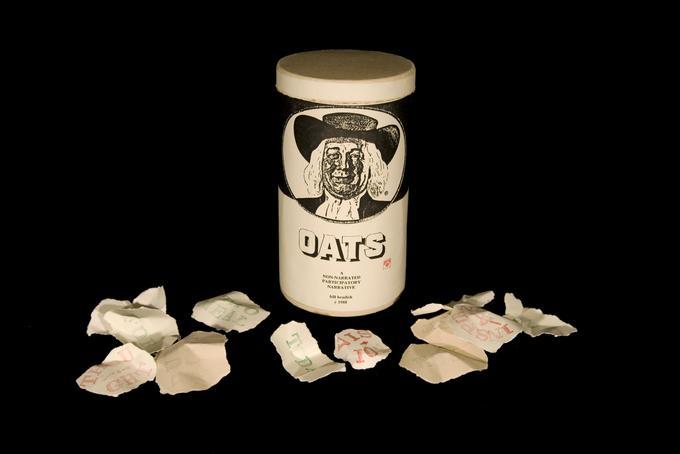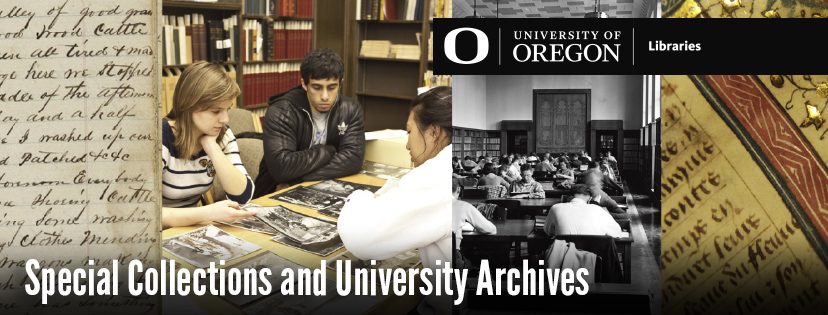Paint and pages converge: The A&AA artists’ books collection

The past meets the present in our Friday File series, where we delve through artifacts housed at the UO Libraries and let them talk.
Art doesn’t have to be two-dimensional, and a book doesn’t have to have pages.
That’s the guiding principle behind the artists’ books collection in the School of Architecture and Allied Arts at University of Oregon. The A&AA library has been displaying some of the artist’s books all term; this is their last week in the library exhibition.
The collection is “an intersection of an art collection and a book collection,” said Sara DeWaay, Art and Architecture Librarian at UO.
The collection is massive, making up over 800 pieces of art. It’s mostly from artists in the Pacific Northwest, like experimental artist and photographer Carrie Mae Weems, and mostly by women, like famous book artist Julie Chen.
Subjects include politics, women’s rights, and the environment. Materials include mat board, watercolor, glass and even human hair.
Some art in the collection even experiments with what can be defined as a book, according to DeWaay. Bill Bradish’s “Oats” is a Quaker Oats box with ripped-up pages of a narrative inside it, and the anonymous work “Kaddish” is a painted, fashioned egg in a plastic jar with words by Walt Whitman running along the bottom.

The artists’ books tradition started with a man who was a poet, painter and printmaker—William Blake, who worked in the late 1700s to early 1800s. Blake wanted to be his own publisher, and his work looked like illuminated manuscripts from Medieval Europe.
Blake’s influence was built on by artistic movements for the next two centuries: The Russian and Italian Futurists, the German Bauhaus movement, the New Realism movement, and the Dadaists all adapted the concept. Today, artists’ books take on every form and every publication model. Some artists make hundreds of copies of their art available, and others only one.
Instructors in the School of Architecture and Allied Arts expose their students to artists’ books in the collection because many students come in with only a minimal relationship to the idea of books, according to art instructor Ty Warren at UO.
“So much of what we see and consume culturally is screen based that I think the understanding of the book as object is vital,” Warren said in an email.
But when students are exposed to these artists’ books, it opens up “worlds of thought.”
“It’s probably one of the most meaningful things they do in my classes,” Warren said.
Warren has an entire online portfolio of student work inspired by these artists’ books.
The artists’ books exhibit will be up until the end of this term in the A&AA library in Lawrence Hall, but much of the collection is also viewable on Oregon Digital.
Scott Greenstone
Student Editorial Assistant
UO Libraries

